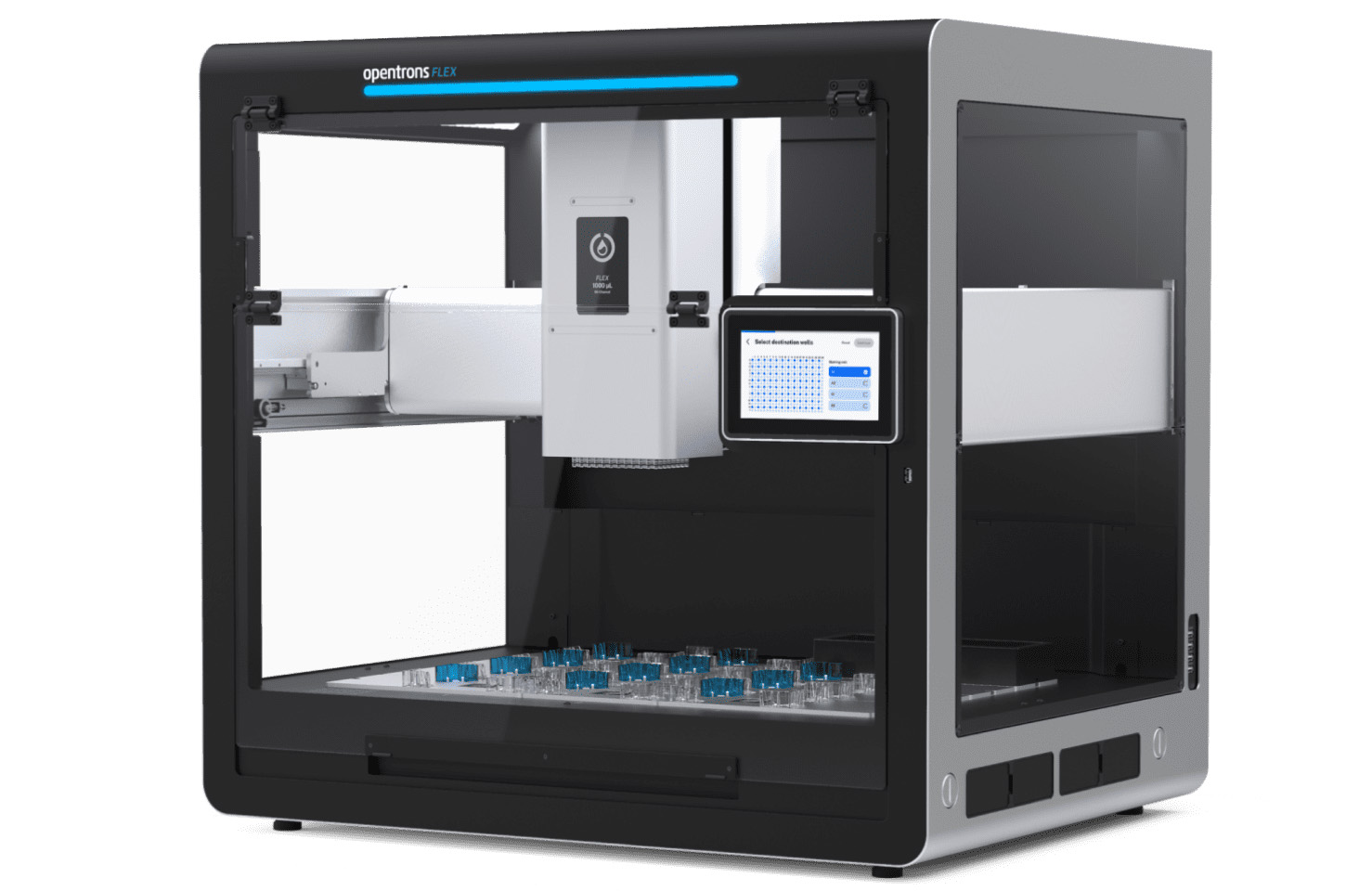|
Listen to this article |

Opentrons’ Flex Prep robot can perform pipetting tasks such as sample reformatting, plate prep, dilutions, concentration normalization, cherry-picking, and more. | Source: Opentrons
Opentrons Labworks, Inc. launched its Flex Prep robot this week. It’s paired with new no-code software that allows users to set up pipetting tasks and execute that workflow all through a touchscreen. The company said this launch will expand its market reach by empowering scientists with no prior laboratory robotics experience to incorporate automated pipetting into their workflows.
With Flex Prep, Opentron aims to combine the simplicity of a pipette with the power and versatility of a liquid handler. This enables it to provide scientists with both ease of use and enhanced capability. With the touchscreen software, users can develop, visualize, and run pipetting tasks in as little as a minute, the company says.
Flex Prep enables users to control basic pipetting tasks, like those currently performed with multi-channel or electronic pipettes, while also offering the flexibility to execute more complex protocols when needed. The company touts tasks such as sample reformatting, plate prep, dilutions, concentration normalization, cherry picking and more, with a wide variety of tube and plate types supported.
“Robotic liquid handling doesn’t have to be complicated or require special know-how,” said James Atwood, GM of robotics at Opentrons. “With the Flex Prep and its no-code software, we’re enabling researchers to delegate repetitive pipetting tasks to our robots, in just a minute or two with no special training needed. It’s as simple as asking, ‘What pipetting tasks would you delegate to your Flex Prep?’”
“For scientists who have yet to adopt automation, these new capabilities offer a compelling reason to reconsider,” Jonathan Brennan-Badal, CEO of Opentrons, said. “Our Flex Prep is not only a cost-effective entry point but also a smart investment for labs looking to scale up their automation with a system that evolves with their needs.”
The global lab automation market size was estimated at $6.87 billion in 2022 and is expected to grow at a compound annual growth rate (CAGR) of 6.64% from 2023 to 2030, according to Grand View Research. Some of the key factors driving growth in the market include a rise in the gap between the availability of trained laboratory personnel and the demand for laboratory procedures and high reproducibility and accuracy obtained through lab automation.

